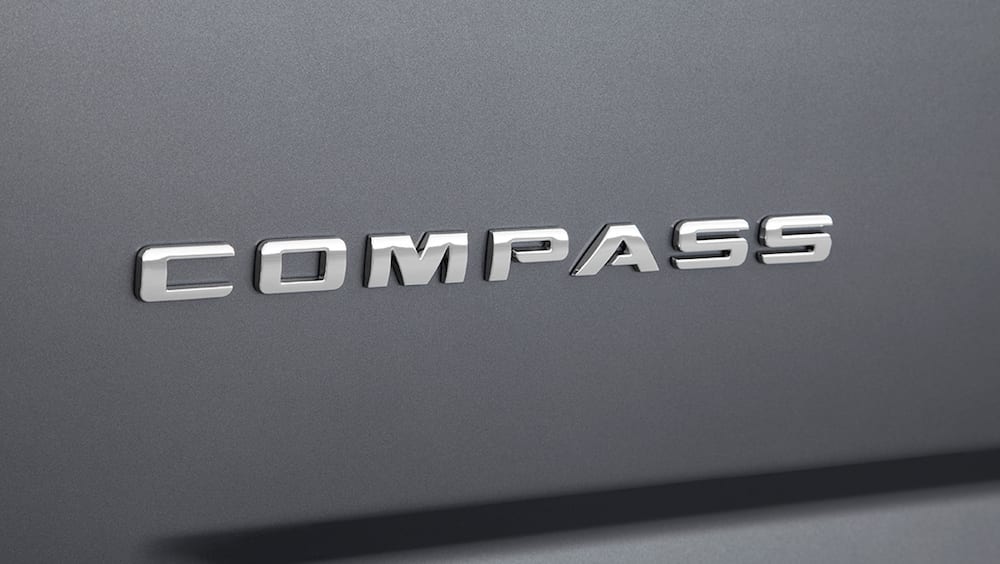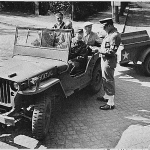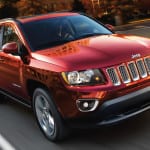It feels like the Jeep Compass has been available for decades, but the nameplate will only be celebrating its 10th birthday next year. The vehicle has evolved mightily since it’s initial concept debut in 2005, but the compact SUV is just as beloved and appreciate as it was a decade ago.
In honor of the vehicle’s inevitable retirement (which we’ll get to later), let’s check out a brief history of the nameplate. You’ll also learn why a used Jeep Compass is an excellent option if you’re on a budget…
The Jeep made its first appearance as a concept vehicle in the summer of 2005. Debuting alongside the Jeep Patriot, the Compass was touted as an affordable SUV that could “deliver fun, freedom, utility, capability, as well as the potential for exceptional fuel economy and interior flexibility.” The vehicle made its official debut at the 2006 North American International Auto Show.
The Compass finally made its debut in late 2006 as a 2007 model year. The brand decided to re-enter the market at an opportune time, as SUV sales in the United States were generally stagnant. There were 368,000 SUVs sold in 2005, which was a slight increase over 2004 (297,000), although still nowhere near what the brands had been hoping for. Starting at $15,985, the new Jeep was restyled inside and our, leading to a sleeker design and a more innovative, technology-filled interior. This part of the brand’s desire to help revamp the segment.
“Jeep Compass will offer customers the confidence and assurance that comes with Jeep 4×4 capability,” said Larry Lyons, the Vice President of the brand’s Front-wheel Drive Product Team. “Compass is a breakthrough all-new Jeep vehicle that provides the utility and functionality of an SUV with the performance, handling, fuel economy and price of a small car or small pickup.”
The original Compass was equipped with a 2.4-liter World Engine (and the accompanying five-speed manual transmission). The vehicle could deliver an impressive 72 horsepower, and customers could boost their new SUV’s power and fuel economy by opting for the Continuously Variable Transmission and the Driver Convenience Group.
Interestingly, the vehicle was intended to feature the same 3.7-liter Power-Tech V6 engine from the Jeep Liberty. This unit was also featured in the brand’s concept vehicle. Despite the removal of the engine, the Compass still included many of the same design cues as the concept vehicle.
The Compass has featured the 2.4-liter unit for most of its run, although customers did have the option of adding the 158-horsepower 2.0-liter World engine. The systems were partnered with a pair of four-wheel drive systems. The vehicle was also the first Jeep to feature front-wheel-drive capabilities.
Of course, the brand was focused on advertising the vehicle’s interior technology, which included an auxiliary audio input jack and a 12-volt power outlet. The SUV also featured a number of safety and convenience amenities, like the Electronic Stability Program technology, Brake Traction Control, an outdoor temperature gauge and UltraFloor vinyl load floors. These features (coupled with the affordable price tag) were all part of Jeep’s attempt to market towards a younger crowd.
“Jeep Compass is designed to appeal to youthful customers who may not have previously considered the Jeep brand,” said John Plecha, the director of Jeep Marketing and Global Communications. “Compass has all the credibility and cachet of the Jeep brand at a very affordable price.”
The brand’s focus on younger buyers was also indicated by the absence of Jeep’s “Trail Rated” badge, an inclusion on many of the company’s vehicles. With Jeep looking to market more towards the standard, everyday driver, they presumably believed a specific on-roader would be more appealing.
The vehicle saw its first significant revamp for the 2011 model. The Compass was completely restyled, with the exterior now more resemblant of the Grand Cherokee. The brand was eager to capitalize on these resemblances, as shown in the “Bloodline” advertising campaign (which touted the Compass as a younger, more modern version of the Grand Cherokee).
“The new 2011 Jeep Compass boasts stunning new styling, with cues coming directly from the brand’s premium icon – the Jeep Grand Cherokee,” said Mike Manley, the President and CEO of Jeep Brand. “Because Compass and Grand Cherokee share this premium design – while offering legendary Jeep capability – our new ‘Bloodline’ campaign makes perfect sense, and allows us to demonstrate that Compass is a progressive, fun-to-drive vehicle targeted to consumers that share the passion of the Jeep brand.”
The revamp included a new suspension, a restyled interior, and the optional Freedom Drive II Off-Road Package (which added all-terrain tires, four-wheel-drive capabilities, and more ground clearance).
In honor of the brand’s 70th birthday, the company also released a Special Edition Compass in 2011. There were several upgrades found throughout the interior and exterior, and customers now had the option of three new exclusive colors: Bronze Star, Bright Silver, and Black.
There have been a number of additional Compass models available during the nameplate’s nine-year run. The Sport was the base model, including all of the amenities that you’d expect from a compact SUV. The Latitude added several security features, including keyless entry, a new Security Alarm, and an Electronic Vehicle Information Center. The Limited model was the top-of-the-line option, including leather seats, sunroof, and a remote starter.
In 2012, the brand rolled out the Altitude Edition, which added a new Boston Acoustics 368-watt premium sound system. Initially offered only for the Grand Cherokee, the model (and the accompanying amenities) was soon included in all of Jeep’s vehicles.
Sales have continued to grow for the nameplate. After a relatively first year on the market (18,579 units sold), the brand sold an additional 20,000 vehicles in 2007. While sales numbers saw a brief dip in 2009 and 2010, the sales numbers have recently jumped. The brand has continued to see personal-high sales numbers over the past three years, culminating in 66,698 units sold in 2015.
The vehicle is a clever option for those seeking a used Jeep. The SUV offers all of the amenities and capabilities that usually accompany the brand’s vehicles, but they’re much more affordable than your typical Jeep. You can find a 2007 model for less than $10,000. The price doesn’t increase much, even in recent-year models. A 2013 Compass with 50,000 miles is listed at only $10,000 dollars, and a 2015 model is even fetching just $14,000! There really isn’t a more affordable compact SUV option on both the new and used market.
Unfortunately, it seems like the Jeep Compass that we’ve grown to love will slowly be phased out in the coming years. As the brand looks to produce a new compact SUV (as well as a pickup truck), the company has decided to retire the Compass and the Jeep Patriot. Both of the names are going to stick around, but the accompanying designs are expected to be retired.
“We’ve got two very good names, two well-established names with Compass and Patriot that continue to perform very well,” said Mike Manley, Jeep’s global chief (via Michael Wayland of The Detroit News). “It will be one of those names — which one, we’re going to have to wait and see.”
This is even more reason to appreciate the company’s first compact SUV… and it’s just another reason why the nameplate is an excellent choice on the used market.








